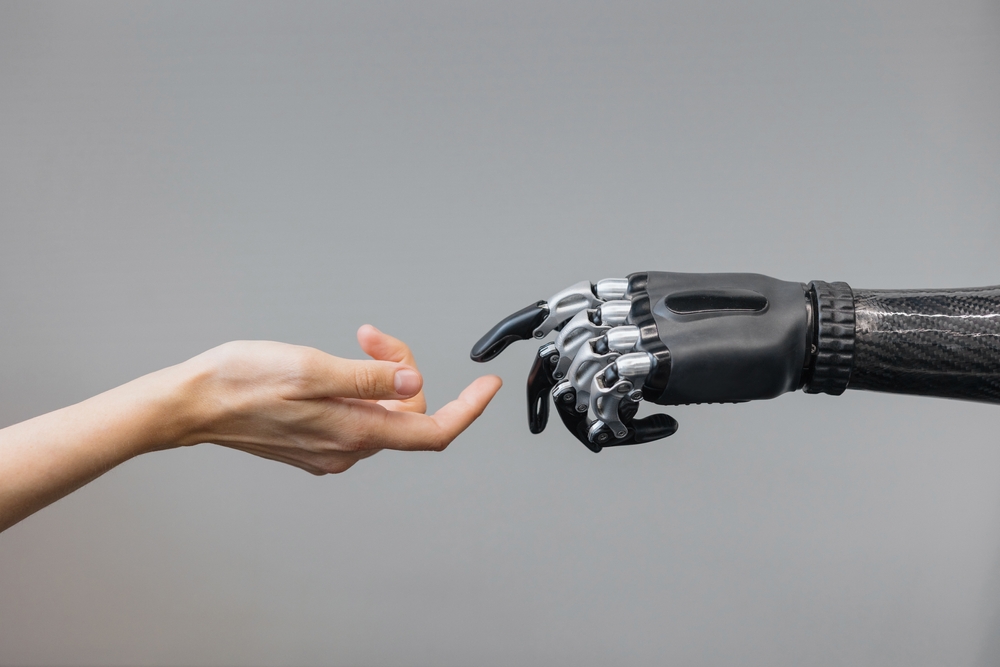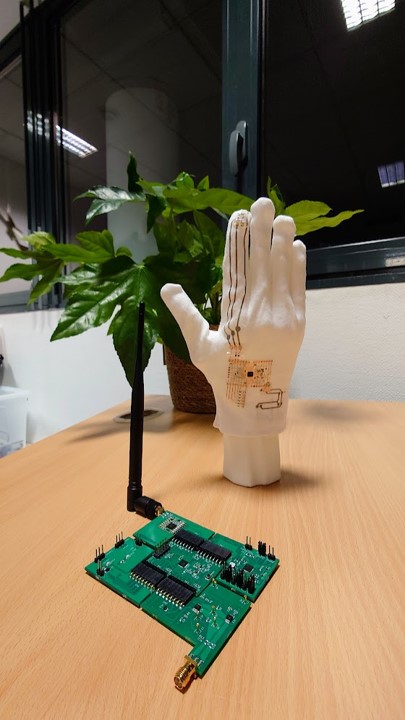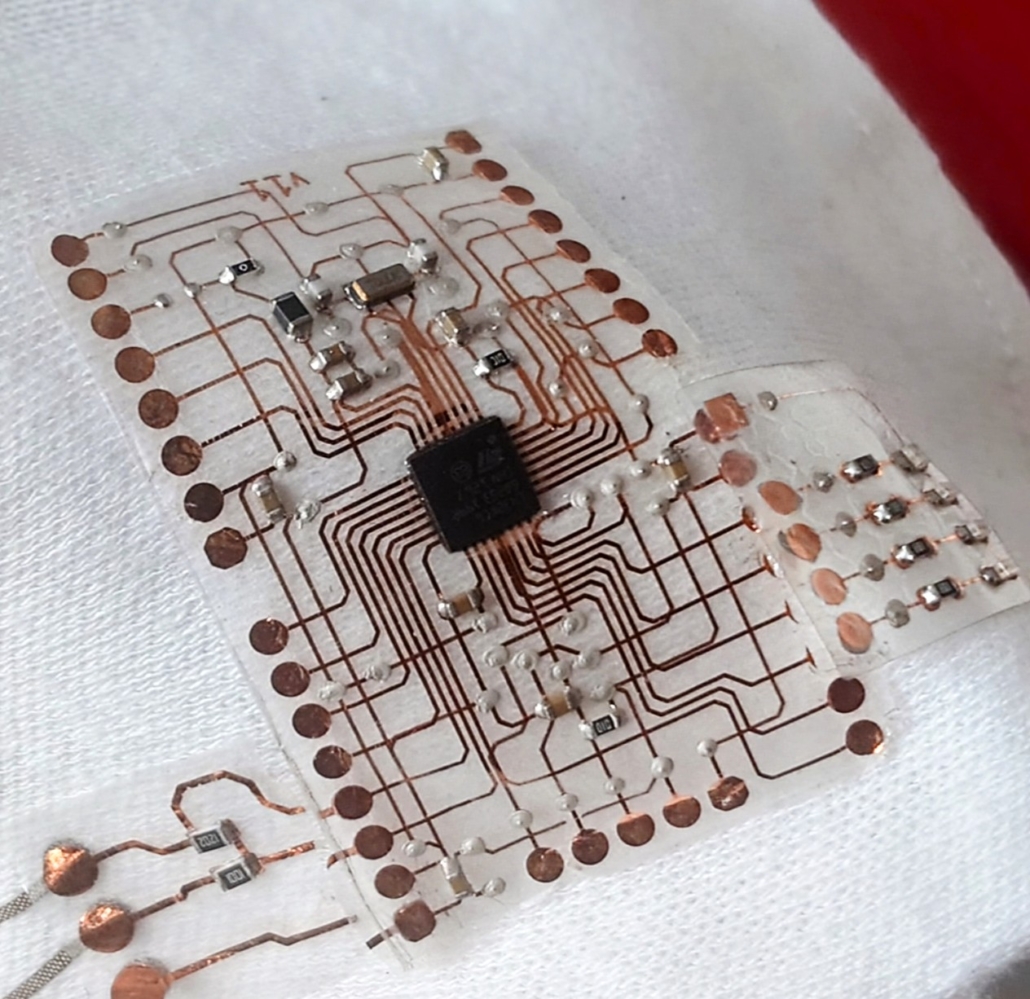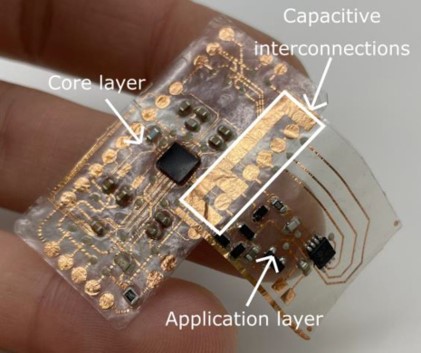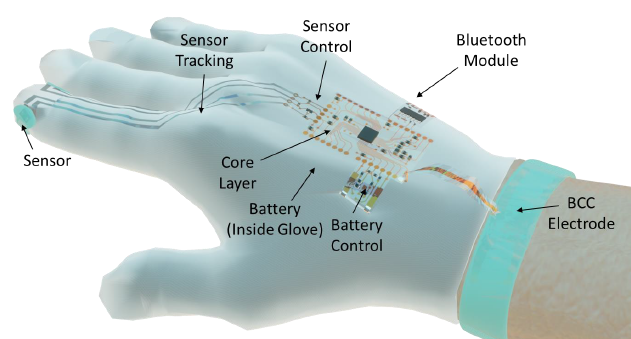Restoring tactile sensations for people who are deprived of them will soon be more than just science fiction. This is one of the goals of the Flexeo research project, led by Sylvain Blayac, with support from Roger Delattre and Marc Ramuz, research professors at the Centre Microélectronique de Provence at Mines Saint-Etienne. Flexeo will enter the second phase in November 2024, extending the project for another four years thanks to funding from the Provence Alpes Côtes d’Azur region. The project was first launched in 2020 thanks to financing from the Plan Nano 2022, as part of the Important Project of Common European Interest (IPCEI) scheme. Around 15 people have made some form of contribution to this project.
4 years, 7 scientific papers and 6 theses later, Sylvain Blayac is presenting a miniature, flexible electronic chip built into a bendable, thin and stretchable medium. A device with so many potential applications.
Electronic skin to restore tactile sensations
The electronic chip turns into electronic skin when it is attached to a glove and connected on one side to an optical sensor that detects tactile perception, and on the other to vibrating motors providing haptic feedback. It was designed to restore and heighten tactile sensations, particularly for people fitted with prosthetics.
The sensor was jointly developed as part of the ANR Optiskin project, led by Marc Ramuz. Placed at the end of the finger, it can read any mechanical functions such as pressure or contact. It is based on a waveguide which is an optical sensor that sends a beam of light through a material that reacts to pressure. When the pressure changes, this material deforms and therefore modifies the way in which the light passes through or is reflected. A detector senses these changes and transforms them into a signal, processed through the card. The card interprets the incoming information to determine the applied pressure and sends it to the electrodes on the forearm.
Body channel coupling technology then takes over, using the human body as a channel to emit signals and this activates the vibrating motors that are placed on the body. These motors generate tactile sensations on the skin. In providing this haptic feedback, the device restores a form of sensitivity for the user and allows them to adjust the pressure they apply to the prosthetic when holding a delicate object such as an egg or a glass, for example.
From a rigid medium to a flexible multi-application chip
Before getting to this stage, the team began by designing the architecture for the chip on a rigid medium. During this first step, the Ocass platform was developed, with a built-in processor core by STMicroelectronics, a project partner. “This step was crucial to be able to then easily build prototypes of the applications”, specifies Sylvain Blayac. “The aim of this platform is twofold, firstly research-based with the development of the electronic skin, and also educational”. Every year, around a hundred students from the center are trained thanks to this platform.
The next step was to transfer this technology over to a flexible and stretchable biocompatible polymer. To link all the various components – motherboard, communication card, sensor card, and energy source – the team developed capacitive coupling technology. “It’s like a post-it, in that it can be attached and removed!” jokes the researcher. Above-all, this means the chip can easily be adapted to different uses, by simply connecting different modules.


